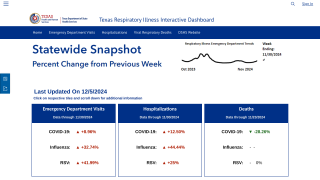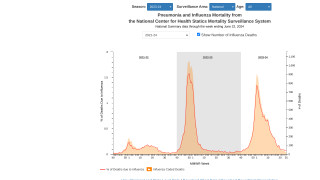Expecting Moms Need Both Tdap and Flu Vaccinations

The Centers for Disease Control and Prevention (CDC)’s immunization quality improvement program may enhance maternal immunizations in obstetric practices, according to the results of a study presented at IDWeek on October 6, 2019.
The CDC says ‘all pregnant women and for every pregnancy, it is recommended that patients receive both influenza and tetanus-diphtheria acellular pertussis (Tdap) vaccines.’
However, vaccine uptake remains far below the CDC’s target goals.
During the 2017–18 influenza season, 49.1 percent of pregnant women received influenza vaccination before or during pregnancy, and just 54.4 percent of women with a live birth received Tdap during pregnancy.
And, only 32.8 percent received both of the CDC’s recommended vaccines.
The CDC says ‘obstetrics practices needed to improve their vaccination delivery programs.’
"Getting vaccinated before and during pregnancy is one way to ensure the health of the mother and baby is protected. Talk with your doctor or pharmacist about all the appropriate immunizations to enhance your prenatal care," shared Jamie Nixon, Pharmacy Intern Brookshire Grocery Company.
To this end, the CDC developed the AFIX program, which consists of 4 components: Assessment, Feedback, Incentives, and Exchange.
This new study was adapted and evaluated the CDC’s AFIX program in the 11 obstetrical settings in Georgia and Colorado.
The results suggested that in obstetric practice settings, the CDC’s AFIX program is effective at increasing vaccination uptake.
- For the influenza vaccine, baseline practice-level immunization rates ranged from 10 to 82.9 percent. The final rates ranged from 32.5 to 85 percent after the 6-month follow-up period.
- For the Tdap vaccine, baseline practice-level immunization rates ranged from 12.5 to 97.6 percent. The final rates ranged from 25 to 100 percent.
Overall, these researchers concluded that “The CDC’s AFIX-OB model provides a promising intervention to improve maternal immunization uptake that can be administered widely, but still be tailored to the needs of individual clinics.”
This new study was presented by Sean OLeary, Associate Professor, University of Colorado School of Medicine, at IDWeek 2019; October 2-6, 2019; Washington, DC. Poster 2735.
In a previous CDC study published in 2018, the most commonly reported reason for not receiving influenza vaccination before or during pregnancy was the belief that the vaccine is not effective (20.2%).
The most common reason for not receiving the Tdap vaccine during pregnancy was a lack of knowledge about the need to be vaccinated during every pregnancy (45.1%).
Vaccine news published by Precision Vaccinations
Our Trust Standards: Medical Advisory Committee


























